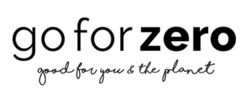Your Cart is Empty
**FREE (PLASTIC-FREE) SHIPPING OVER $89 IN AU | $9.95 FOR AU ORDERS BELOW $89**
Menu
-
- BRANDS
- New
-
A - F
- Aleph Beauty
- Amavasya Healing Store
- Baby Quoddle
- Banksia Pods
- Bare and Boho
- Bear & Kind
- Bearded Chap
- Beauty and the Bees
- Bee Green Wraps
- BioTuff
- Brightberry
- Buchi Brew Co
- Byron Bay Detox
- Chubby Bee
- Coconut Bowls
- Core Skincare
- Desert Shadow
- Downunder Wash Co
- Earth Greetings
- Eco Coconut
- Eco Art & Crafts
- Eco Max
- Eco Modern Essentials
- Eco Toothbrush
- Ecyo
- Eden Health Foods
- Ethique
- Ever Circle
- Ever Eco
- E.sup
- Femme Organic
-
G - N
- Gentle Habits
- Go for Zero
- Goodeau
- Good Change Store
- Good Cuppa
- Green Grip
- Haakaa
- Here and After
- Honeybee Wraps
- Honeysticks
- Ilo Wellness
- IME
- Jack n' Jill
- Kayu & Co
- Kelpy Bone
- Kiin Baby
- Kooshoo
- Laminated Cotton Shop
- Left-handesign
- Love Beauty Foods
- Magic Earth
- Mika Creations
- Miod
- My Mimi
- Natural Rubber Soother
- No Nasties
- Noosa Basics
- Notely
- Nuebar
- Nutra Organics
- Nurtur Tea
-
O - S
- One Chew Three
- Paper Saver
- Patch
- Planet Revive
- Pleasant State
- Poppy and Daisy Designs
- Raw Medicine
- Resparkle
- Retro Kitchen
- Rosie Lou
- Rustic Peppermint
- Salty Aura
- Saver Sleeve
- Scoop Whole Beauty
- SealPod
- Shampoo with a Purpose
- Sileco
- Solid Oral Care
- Sow n Sow
- StokedNZ
- Strap
- Stray Willow
- Sunbutter
- Surfmud
-
T - Z
- Tappwater
- That Red House Soapberries
- The Australian Natural Soap Company
- The Fabric Comb
- The Glitter Tribe
- The Keeper
- The Loose Tea Company
- The Naturool Co
- The Physic Garden
- The Swag
- The Tooth Faerie
- Thrive Tallow
- Togo Sun
- TOMbag
- TOM Organics
- Tooletries
- Urban Composter
- Urban Greens
- Urthly Organics
- Veggie Saver
- Viva La Body
- We Might Be Tiny
- Winki Zinc
- Woohoo
- Wotnot
- ZeroCare
- Zone Yoga
- 📚 15% off back to school & work
- SKINCARE & MAKEUP
- BATHROOM
- HOME
- FAMILY
- Zero Waste packs & Gifting
- SALE
- BLOG
- ABOUT US
-
- Login / Subscribe
-
Australia (AUD $)

**FREE (PLASTIC-FREE) SHIPPING OVER $89 IN AU | $9.95 FOR AU ORDERS BELOW $89**

Your How-To Guide for Recycling in Australia
June 24, 2021 6 min read
Your How-To Guide for Recycling in Australia
On average, Australia produces around 67 million tonnes of waste each year.
While we’re on a mission to reduce this number, the first step in keeping waste out of landfill lies in our recycling education. After all, keeping unnecessary items out of the landfill is pretty tough when you don’t know what else to do with them, right?
That’s why we’ve put together this simple guide to help you navigate the world of recycling. From what can go in your recycling bin to what to do with the items that can’t, we’ve got you covered!
The Dirty on Recycling
Before we jump into how and what to recycle, let’s take a moment to understand why recycling is important in the first place.
The purpose of recycling is to convert waste materials into reusable products. You’ve likely spotted a brand or two that uses recycled paper for napkins or recycled bottles to create leggings.
The process of recycling helps to keep these reusable materials out of the landfill and place them back into useful rotation. However, it is important to recognise that while recycling is better for the environment than greenhouse gasses in landfill, the process does consume a considerable amount of energy.
For this reason, we believe recycling is fantastic, but not the end solution when it comes to reducing waste. Whenever possible, opt for package-free products and reusable containers, but when no such option is available, here’s what to do!
How (and What) to Recycle
When we hear the word recycling, most of us think of the blue or yellow top bin that we roll to the curb on collection days. While this is a form of recycling, it’s not the only option we have!
Because the products in these bins go through a sorting machine, there are quite a few restrictions on what we can place in these bins. While a small piece of plastic or a single sheet of aluminium foil may be perfectly recyclable, the size of the object can often clog up the machines.
Fortunately, there are some other ways you can take care of these products to ensure as little waste goes to landfill as possible.
Let’s take a look at what goes where!
1. Containers and Packaging
These are a prime contender for your regular recycling bin and include materials such as plastic water or soft drink bottles, aerosol cans, aluminium and steel tins/cans, juice and milk cartons, plastic takeaway containers, glass bottles such as wine and beer bottles, and (most) other hard plastics.
Of course, all of these items need to be emptied of food and liquid. Simply rinse out your milk jugs and restore the lid for recycling. However, the plastic lids on their own are actually too small to be sorted effectively. Along with bread tags, you can save your small plastic lids to be donated to foundations around Australia that use the bits and pieces to make prosthetics and wheelchairs. If you live on the Sunshine Coast please drop your plastic bread tags and milk bottle caps off to our Kunda Park warehouse (2/8 Tectonic Crescent) and we will send them off to Oz Bread Tags For Wheelchairs Australia and Lids For Kids to be recycled.
Another tricky recycling product is aluminium foil. To recycle your foil, you just need to make sure the foil is large enough to be sorted (the size of a golf ball). Start a collection to bundle together (watch our video on this here) or simply make the switch to reusable baking mats to avoid this tricky product altogether!
2. Paper and Cardboard
Paper and cardboard products are also appropriate for your recycling bin, however, there are some exceptions.
Shredded paper cannot go into the recycling bin. Many believe that chucking your shredded paper into a bag makes it suitable for recycling. Unfortunately, this is not the case.
No items in your recycling bin should be in a bag. The bags are soft plastic and cannot be recycled the same as hard plastics (more on this later). In addition to this, the bag prohibits sorting, clogging up the machine and causing problems.
Once paper is shredded, it’s simply not sortable at the recycling station. Instead, save these paper shavings for small pets such as rabbits or hamsters or dispose of them in your compost bin.
The same goes for soiled cardboard. If your pizza was extra greasy, tear the soiled bottom away from the cardboard top. You can recycle the top and break the bottom up for composting.
And of course, the product that causes perhaps the most confusion of all - the takeaway coffee cup.
Coffee cups may look like they are made of paper/cardboard but the coating on the inside is far from recyclable. Because these materials are so hard to separate, the cup cannot go into your kerbside recycling bin, however, the plastic lid can! Another option is to take your coffee cup to your local 7 Eleven, they accept all brands of coffee cups and straws for recycling.
3. Soft Plastics
The easiest way to determine whether a plastic is soft or hard is to scrunch it up in your hand! If the plastic returns to its former shape, it’s hard and can be recycled in your regular recycling bin. If the plastic squishes into a ball and stays that way, it’s soft and needs to be taken care of separately.
Soft plastics are much harder to recycle and must be taken to special facilities. Fortunately, here in Australia,Redcycle collects these soft plastics at most grocery stores.
Simply ask your local Coles or Woollies staff to direct you to the soft plastic recycling and voila - easy as pie!
4. Batteries, Mobile Phones, and Electronics
All of these items are not recyclable via your regular recycling bin, however, many companies now collect electronics, batteries, and even printer ink cartridges in-store to be responsibly recycled.
Batteries are accepted for recycling at:
- All Australian Aldi stores
- Participating Battery World stores
- Officeworks are rolling out a national recycling scheme for batteries too!
Head here to see where you can recycle ink cartridges too, there are more options than you may think!
If you're unsure, call your local electronics store or visit the brand’s website to discover recycling collection locations near you.
5. Hard to Recycle Items
Believe it or not, not every plastic is recyclable. Because plastics have a little recycling triangle stamped on them, it’s easy to get confused.
These triangles with numbers and letters give us insight as to how difficult the plastic is to recycle. They also reveal the likelihood of plastic leaching. For more information on how to read these labels, check out our in-depth explanationhere!
Fortunately, even hard to recycle plastics such as toothbrushes and other items can be recycled. You just need to find the right place to take them.
Here at Go For Zero, we collect hard to recycle items for Terracycle and send them off to be responsibly recycled. All you need to do is send your hard to recycle items (plastic razors, dental products, coffee pods and more) in to contribute to the collection. What’s even better is that TerraCycle rewards every one of us for recycling by donating money to a charity of our choice! So far, we’ve been able to support 8 Australian organisations!
When in Doubt, Sus it Out!
Not sure if an item is recyclable or where to take it? Turn to your smartphone for the answers! Planet Ark’s platform ‘Recycling Near You’ is the perfect resource to clear up any confusion.
This database allows you to search for your nearest recycling facility based on the waste you’re dealing with. You can even read your local council’s recycling rules to be sure you are following the guidelines within your region!
Recycling in Australia
Now that you know how and what to recycle, you can put your knowledge to the test! From mastering your household recycling bin to sending your items in for Terracycle, you can rest assured knowing you’re doing your part to protect our planet!
Ready to tackle the waste problem with us? Shop your values in our ‘reduce your waste’ section and skip unnecessary waste altogether!
Leave a comment
Comments will be approved before showing up.
Recent Articles
- Refillable Makeup Explained: A Beginner’s Guide to Toxin Free, Eco Friendly Beauty December 19, 2025
- Our Top Aussie Eco Holiday Spots for Sustainable Travel December 14, 2025
- 5 Ways to Avoid Microplastics in Your Drinks December 05, 2025
- Ditching the Nasties: How to Keep Microplastics and PFAS Out of Your Water December 05, 2025
- Gift Wrapping Guide: How to Responsibly Dispose of Gift Wrap and 6 Zero-Waste Wrapping Ideas! December 05, 2025
Subscribe
Sign up to get the latest on sales, new releases and more …
